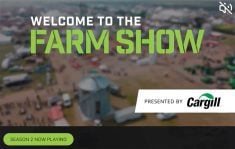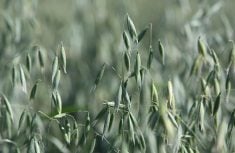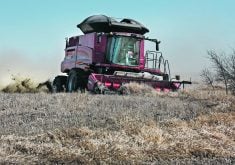Benefits of native grasses
Many farmers are converting marginal cropland to forage production and some are using native forage species.
It makes sense. These species have grown on the Prairies for thousands of years so they are highly efficient and require little maintenance.
“It has also been found that most widely grown introduced grasses are deficient in one or more ways,” said Paul Jefferson, head of the forage section at Agriculture Canada’s semiarid prairie agriculture research centre in Swift Current, Sask.
“For example, crested wheatgrass does not maintain its quality into summer. Russian wildrye is difficult to establish, especially on sandy soil types, and old stands are not productive if the legume is eliminated.
Read Also

VIDEO: Ag in Motion documentary launches second season
The second season of the the Western Producer’s documentary series about Ag in Motion launched Oct. 8.
“So seeded native grass may fill a need for additional high-quality summer, fall and winter grazing,” he said.
Prices will drop
Seed prices of several native grasses, such as wheat grasses and green needlegrass, will soon be competitive with the seed of introduced forage grasses, he added.
Feeding cattle on pasture is cheaper and more environmentally sustainable than feeding in a feedlot.
“Still, restoration of large areas of the original mixed prairie is, at this time, very expensive, as well as a lengthy process for livestock purposes. Seeding to a few available species may be the next best thing.”
Centre researchers have evaluated several native grasses for forage yield, quality and the pasturing of beef cattle. Neal Holt began the project and Jefferson completed it.
Pastures containing three native grasses – northern wheatgrass, western wheatgrass and green needlegrass – were established in 1993 and ’94. They were seeded as a grass mixture, with alfalfa or cicer milkvetch.
They were grazed by beef cattle from 1995 to ’96, and individual trials were established for summer, fall and early winter grazing.
“Our studies showed that the most productive pastures, as well as those with the fewest weeds, contained a fast-growing species such as alfalfa with the native species,” said Jefferson.
Impressive gains
“The benefit of including a legume in the native mixture was evident in the forage production and in the beef cattle gains. The calf gains on these pastures in fall and early winter were nearly as good as those observed in feedlots.”
Estimates of forage production and grazing capacity on native grasses were competitive with introduced grass species. And a monoculture of western wheatgrass exhibited better forage quality for winter grazing than a mixture of northern wheatgrass, western wheatgrass and green needlegrass.
“These preliminary results are very promising, especially for summer to winter grazing, a period in which there are limited options for introduced species. The carrying capacity and average daily gains of calves and yearling steers were excellent, and probably better than for most introduced pastures grazed at the same date.
“We think these results will help producers develop productive and biologically diverse pastures that are sustainable for livestock production and also for wildlife habitat,” Jefferson said.
– Saskatchewan Agriculture














